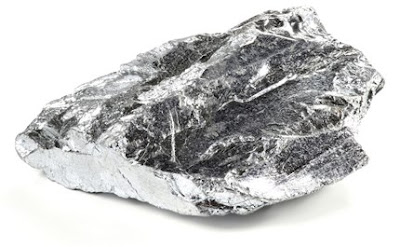19-December-2018: According to a report by Grand View Research, Inc., global high performance alloys market is anticipated to value USD 11.34 billion by 2024. Growing requirement for metals offering superior properties and performance at low cost is anticipated to propel demand for high performance alloys. These alloys are likely to offer superior characteristics making it better replacement for aluminum and steel.
High demand for light materials in aerospace sector attributed to growing need for next generation aircrafts can influence growth of market. Growing adoption of alloys in thermal processing, petroleum sector, and oil & gas extraction can fuel market growth over next few years. Increasing use of recycled materials for producing alloys attributed to rising environmental concerns can drive growth of market. Continual technological advancements in processing techniques of alloys can positively impact market growth over the forecast period (2012 to 2024).
The high performance alloys market can be segregated on the basis of material, application, product, and region. Based on product, the market can be categorized into refractory, platinum group metals, non-ferrous metals, and super alloys. In 2016, non-ferrous segment dominated the market and accounted for 51.6% market share in terms of revenue. Increasing use of non-ferrous alloying material in manufacturing of electrical and electronic devices can spur demand. It is likely to emerge as fastest growing product over the forecast period and account for CAGR of 4% in terms of volume. Growing adoption of these alloys in automotive sector can fuel growth.
In addition, super alloys segment is likely to grow well attributed to rising use of thee alloys in aerospace, oil & gas, power generation sector. In addition, use of super alloys in chemical processing & heat exchanging tubes attributed to high heat resistance can fuel growth.
Based on material, market can be classified into titanium, magnesium, aluminum, and others. Aluminum segment is predicted to witness significant growth and account for CAGR of 5.4% in terms of revenue. High demand for aluminum alloys in aerospace and automotive application can fuel growth.
Similarly, titanium segment is expected to grow well over the forecast period attributed to increasing usage in building fuel nozzles of jet engines. In addition, superior properties such as high tensile strength, toughness, and light weight can surge product demand over next few years.
Based on application, the market can be segmented into automotive, industrial, aerospace, industrial gas turbine, oil & gas, E& E, and others. In 2016, industrial gas turbine segment is expected to account for 19.7% during the forecast period. Rising demand for high performance alloys attributed to high temperature resistance can fuel growth of market over next few years. In addition, increasing use of alloys in turbines to enhance performance lifetime can spur market growth.
Similarly, use of high performance alloys in manufacturing of critical industrial components can augment growth of market. Moreover, rising product demand in defense and oil & gas segments sectors can drive market growth over the forecast period.
Moreover, aerospace segment is likely to grow at CAGR of 55.4% owing to increasing use of lightweight materials in defense and commercial aircrafts.
Regional segmentation includes Europe, North America, Asia Pacific, Central & South America, and Middle East & Africa. In Asia Pacific, the market is anticipated to grow fast and account for CAGR of 5.9% during the forecast period. Rising production of automobiles coupled with growth of aerospace sector can influence growth of market in this region. In addition, surging gross domestic product (GDP) of emerging economies coupled with growing adoption of indigenous manufacturing in the region can fuel market growth.
On the contrary, North America is likely to dominate the market attributed to high consumption volume realized by aerospace industry in United States (U.S.). In addition, rebuilding of oil & gas industry in the economy can contribute well for growth of market over the forecast period.
Some of the leading companies offering high performance alloys are Alcoa Inc.; Precision Castparts Corp.; Hitachi Metals Ltd.; Allegheny Technologies; and Timken Company. This market can be characterized by presence of regional and international players engaged in strategic partnerships to gain traction among consumers. In addition, these market players are likely to establish their manufacturing facilities across the globe to enhance footprint.
In-Depth Research Report On High Performance Alloys Market:
https://www.grandviewresearch.com/industry-analysis/high-performance-alloys-market









